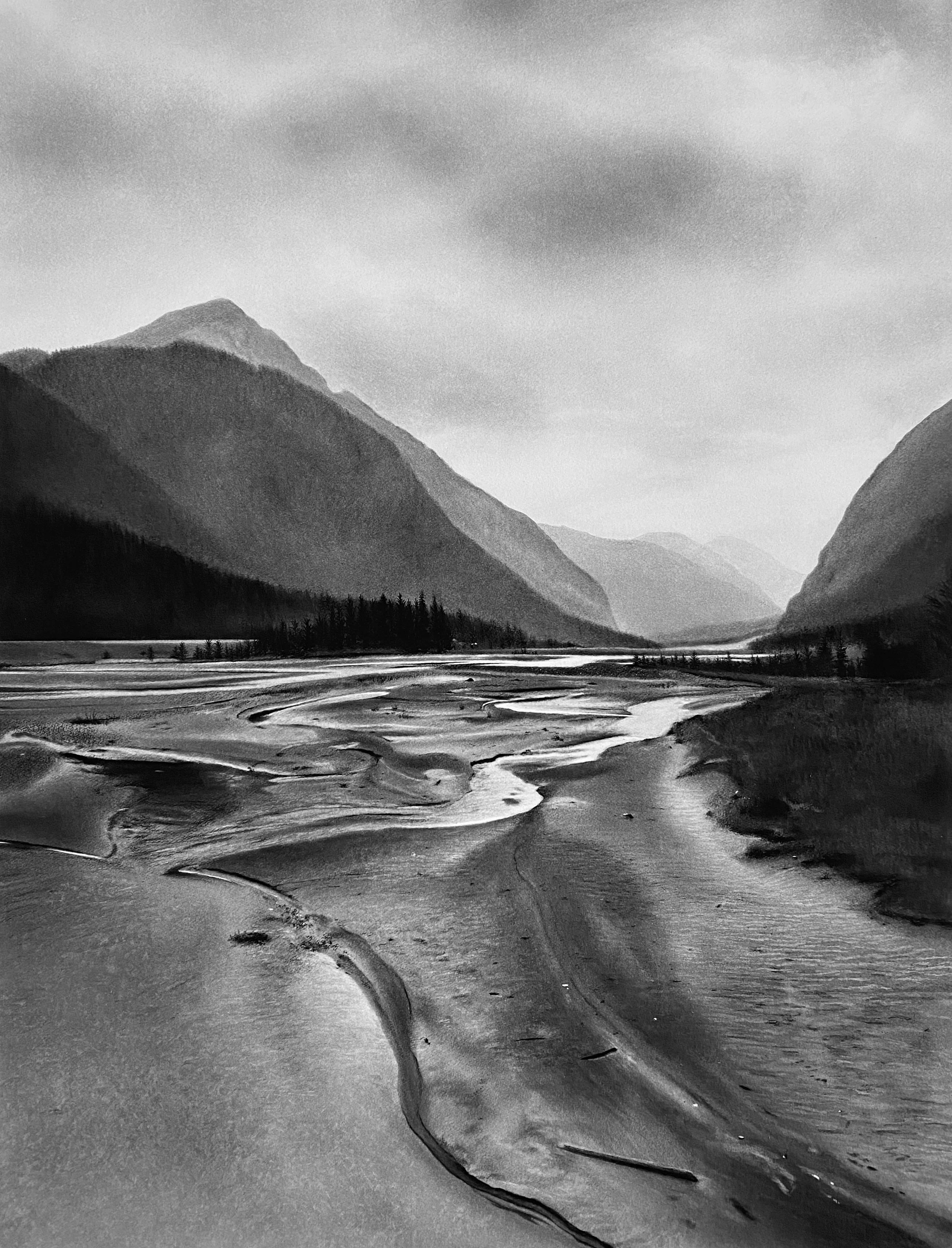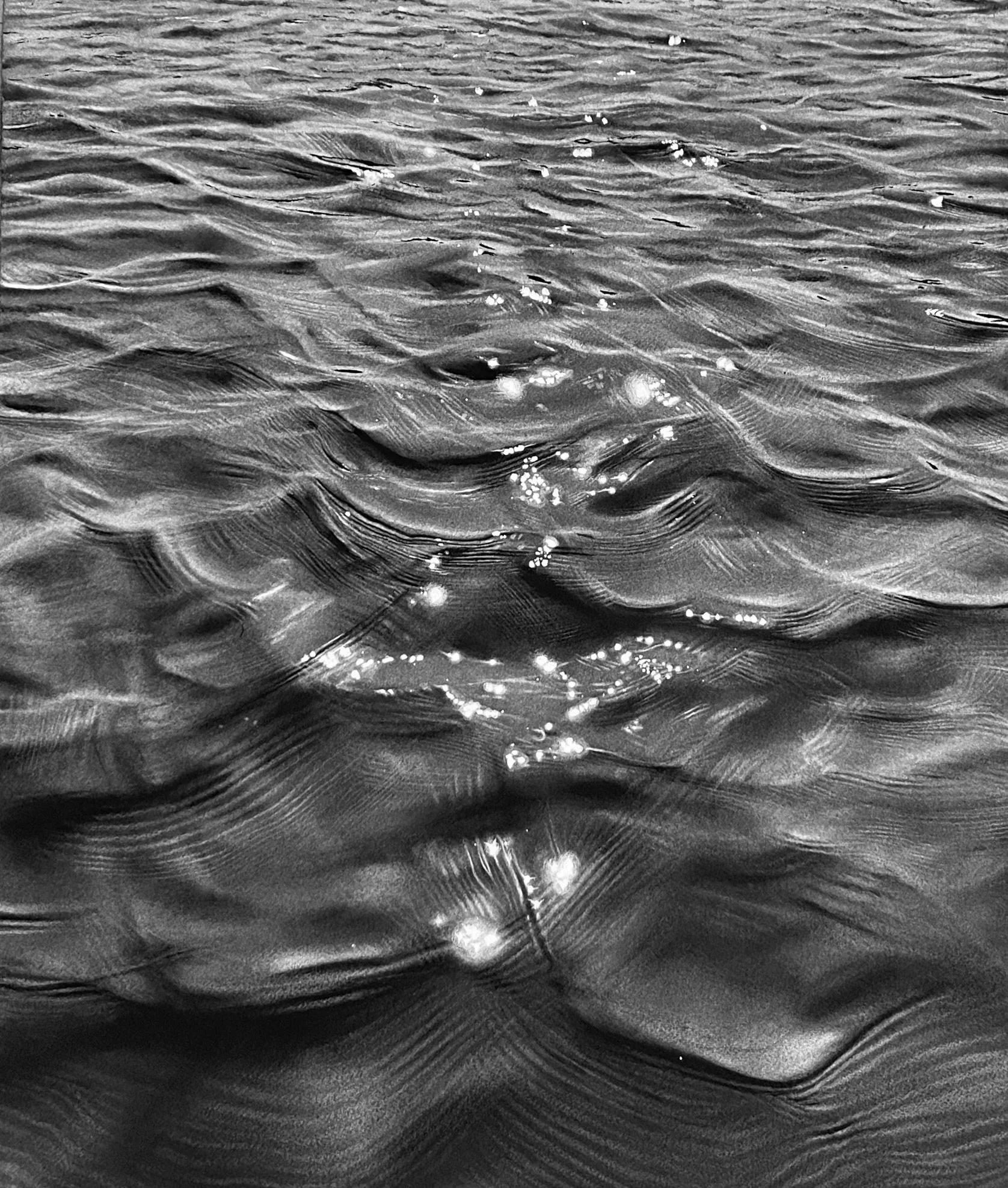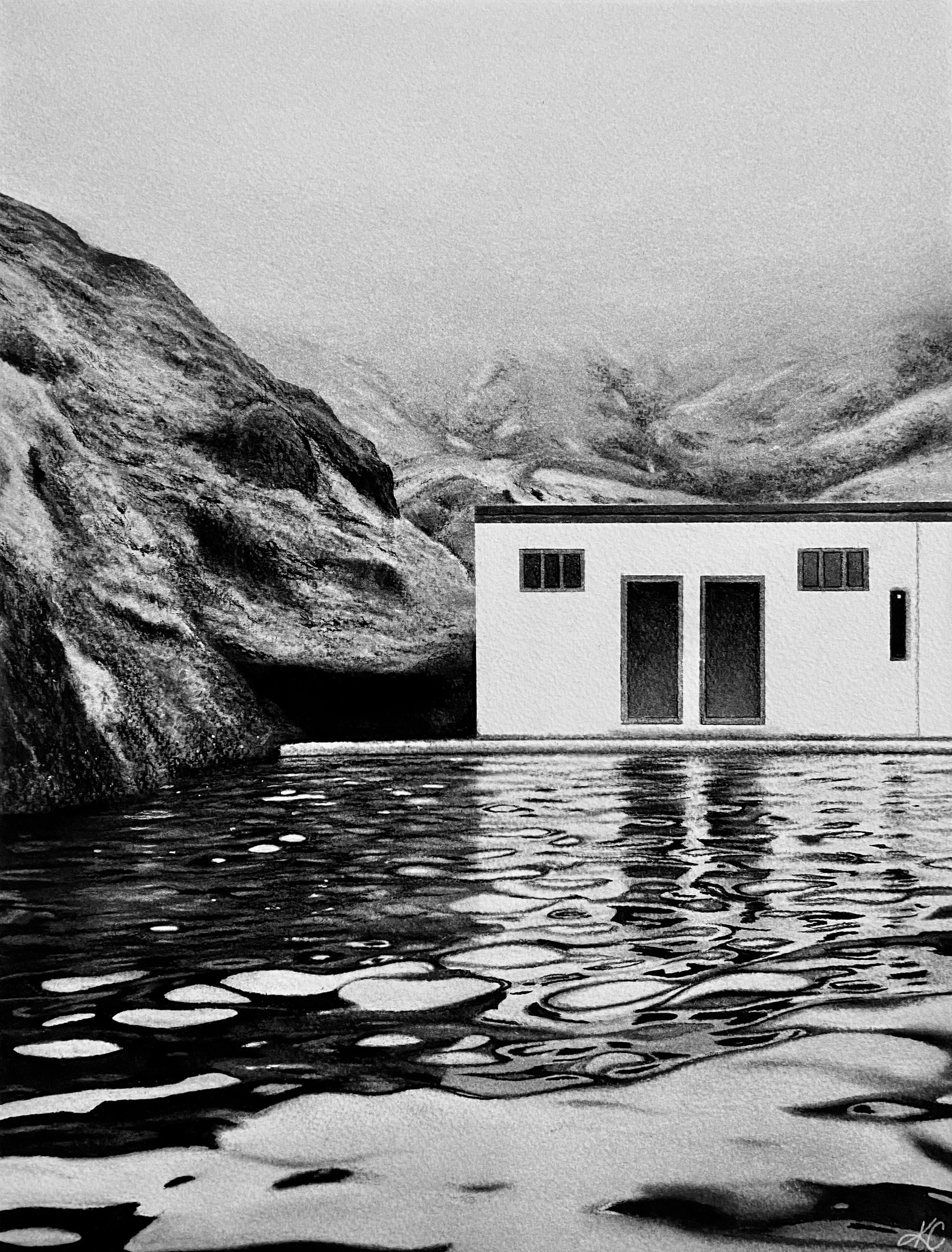An Interview With Katherine Curci
I can’t remember where I first saw Katherine Curci’s unbelievable charcoal drawings; but I remember how I felt. Magnetized, at first, by their placid allure. And then completely mind-blown by the fact that these pieces weren’t photographs.
For as calm as these images may make one feel, the exceptional attention to realism in Curci’s practice lends the work a sense that the scenes captured are alive somehow. A current of vitality reverberates through each piece; water comes to flow and vistas stretch out with all the intervention – blankets of fog, dapples of sunlight – that makes looking at a landscape great. She harnesses and interprets the vigour of an atmosphere, mirroring it with consideration and reverence.
Curci’s work begs to be viewed up close, and I took the occasion of her presenting a cluster of new pieces at the upcoming Summer Group Exhibition at Olga Korper Gallery to ask about her earthly muses, and how beauty can spur us into climate action.
OPALOMA: What is it about the "natural" world that is so compelling to you as a subject?
KATHERINE CURCI: The natural world is something that I find to be compelling in many ways. It encompasses everything from the vast and remote landscapes to the smallest details of life, which is something that I aim to describe through my practice. What stands out most when I think of why I’ve chosen nature is its affect on our emotional and mental well-being. Whether we’re in nature or we’re viewing scenes of nature, it can reduce stress and bring us a sense of contentment. It’s funny, as I’m writing this, I'm sitting on the dock of my cottage watching the sunlight reflect on the ripples of the lake and I feel a deep sense of calm and peace. Moments like this are the reason why I have such an appreciation for the subject.
How did you land on your photorealistic style as an artist?
I fell in love with photorealism during my portraiture drawing class at OCADU. My instructor, Erin Finley, introduced me to a number of drawing techniques that I still use to this day. She helped me to push my technical skill set to new limits and from that point I became captivated by the desire to replicate reality in its truest form. Not only has this style been a technical achievement, it’s also a way for me to celebrate the intricacies and the beauty of the world around me.
What source material do you work from?
I typically work from my own digital and film photographs. I have a great interest in photography, particularly film, and I like to incorporate its distinctive qualities into each of my drawings.
Given your subject matter, how does climate action advocacy intertwine with your practice?
My goal as an artist is to evoke an emotional connection between the viewer and each drawing. I believe that our emotions significantly influence our decision making, and through my work, I aim to highlight the urgency of caring for the beauty around us before it's too late. By creating pieces that represent characteristics of our planet, I want to remind viewers of the importance of acknowledging its fragility. I often think about how the subjects or locations I’ve drawn can potentially become nonexistent in the future, and that motivates me to use my work to raise more awareness of climate change.
Tell me about the type of commissions that you do – how is the process or making of, or the mood of a piece, perhaps different when you're working with vantages that have particular meaning or sentimentality to another person?
What I love about my commission work is that it ranges from charcoal landscapes and portraits, to both realistic and abstract painting. I’ve had clients request acrylic, oil and even plaster paintings at times. Even though charcoal is my preferred medium, it's nice to occasionally step away from what I typically work on day-to-day in my studio practice. When I’m asked to do commissions, the subject chosen is often of a place or person of significance so this can change the way I approach the drawing. I want to bring the client back to that very location or person as if the drawing is a clear memory, so working intently from the photograph they have provided is an important part of the process. Keeping the client's vision at the forefront is always my priority. This of course can change depending on if my clients have given me creative freedom or have requested something more abstracted. Regardless, I always try to maintain the same kind of emotion present in all of my pieces, both commissions and personal work.
Water and the moon are two recurring subjects in your work; why, and how would you characterize your relationship to them?
They both have an undeniable sense of mystery and tranquility that I find captivating. Both subjects are connected scientifically but also symbolically. The moon not only influences the tides, but it also represents life, change, and the passage of time similar to how water ebbs and flows. Both subjects can be calming and powerful.
From a technical standpoint, light and shadow play an important role when representing them in my drawings. I’m always interested in how the light reflects off the contours of the surface of water and the moon as it creates endless possibilities for compositions.
What kind of pieces of yours can folks expect to see at the Summer Group Exhibition?
Viewers can expect to see five new pieces created for the show. These drawings are inspired by the theme of water, ranging from expansive landscapes to the intricate details of ripples and highlights on the water's surface.
Why are you looking forward to being a part of the show?
I am thrilled to be part of this show at Olga Korper Gallery. It is truly an honour to have my work displayed in one of Toronto’s most highly-regarded galleries alongside so many incredibly talented artists.
The Summer Group Exhibition at Olga Korper Gallery begins Thursday, July 25th with an opening reception from 5-8pm. Other artists featured are: Matt Donovan, Robert Fones, Shabnam K. Ghazi, Meaghan Hyckie, Kelly Mark, Ken Nicol, Isabel Okoro, Luca Soldovieri, Ron Shuebrook, and Sarah Tompkins.
This interview has been edited and condensed.




